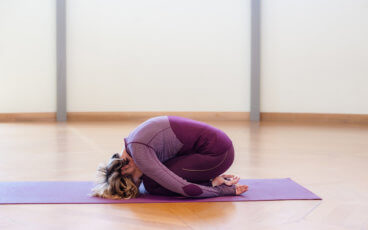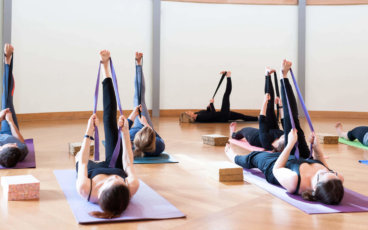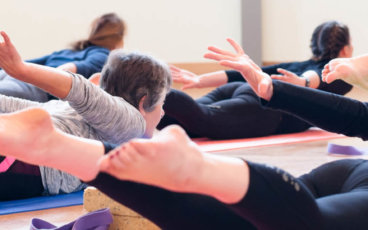Pranayama
Classes at Yoga 7 always start with pranayama (breathing techniques) for approximately 15 minutes. Unlike most yoga classes all classes at Yoga 7 are traditional and therefore offer 70-90 minutes of yoga.
“Pranayama is the link between the mental and physical disciplines. While the action is physical, the effect is to make the mind calm, lucid and steady” Swami Vishnu-devananda
You will be encouraged to breath in and out through the nose throughout the class allowing the hair follicles in the nostrils and mucus membrane to act as natural filters, helping to purify the air being inhaled. The importance of adopting abdominal breathing in your daily life as well as in each class will also be encouraged. Please note that some of the effects of the breathing techniques are powerful and should only be practised under the supervision of a qualified yoga teacher. If you struggle with the breathing techniques used at first dont worry you will get used to them but they are unusual to begin with. Ask about tools for helping to cleanse the nostrils such as Neti Pots using a salt and luke warm water solution to help clear the nasal passages.
Some benefits of Pranayama
-Breathing techniques used to cleanse the nasal passage, lungs and the entire respiratory system.
-Strengthens and increases the capacity of the lungs and intercostal (ribcage) muscles
-Helps drain the sinuses and eliminate accumulated mucus.
-Bronchial congestion and spasm are removed; consequently, asthma is relieved and virtually eliminated, over a period of time.
-Helps the body to eliminate large quantities of carbon dioxide and other impurities. This permits the red-blood cells to suck in more oxygen, increasing the richness of the blood.
-The added intake of oxygen into the body enriches the blood and renews body tissues.
-The movement of the diaphragm and abdominal contractions massage the stomach, liver, spleen, heart and pancreas.
-Abdominal muscles are strengthened. Digestion is improved.
-The regular practitioner of Kapalabhati offers blooming vigour and health.
-Increases the supply of stored-up prana (energy) in the solar plexus region (centre of your chest right of your heart)
-Brings an increase in alertness as a result of the increase in oxygen to the brain.
-Creates a feeling of exhilaration and peace.
Asana (postures)
The majority of each class is spent doing a variety of postures, what is commonly referred to as Yoga. Higher and lower options are given when possible, according to the student’s ability and how students feel on the day. Students are encouraged to be sensitive to what is going on with their own bodies so as to avoid pain. Discomfort is encouraged in some postures but a student should never feel pain. Some of the asanas (postures) will be demonstrated, whilst others will be clearly explained, helping students to get a mental picture of each asana aids in understanding how certain postures are to be practised. You will be adjusted to ensure that you are doing the postures correctly ensuring the maximum benefit of each posture. If a student feels she/he can’t do something (or doesn’t want to) he/she will be encouraged to relax rather than doing other postures.
It is important for the student to focus on deep abdominal breathing through the nose whilst practising the asanas (postures). Each posture has different benefits for both the mind and body. At the end of the asana you will feel that you have stretched and strengthened every part of your body. Over time practising yoga at Yoga 7 will lead to improved balance, sleep, mood, flexibility, range of motion and strength as well as the management of some chronic conditions.
Yoga Nidra/Final Relaxation
The last part of the class is a guided relaxation in which the student is encouraged to experience the state of consciousness between waking and sleeping. The body becomes completely relaxed and the practise of the relaxation has been found to reduce tension and anxiety.
The relaxation works via the process of autosuggestion with the repetition of silent instruction over a period of 18 minutes with 2 minutes silence at the end. Switching the mind off can take time, so please be patient with yourself in allowing this to happen. The benefits of Yoga 7’s relaxation are innumerable and encompass the physical, mental, emotional & spiritual aspects of life.
The all important REM dream state can be achieved momenterily as Theta brain waves are being created during the relaxation the same you find in light sleep and a deep meditation. The effect of Theta brain waves can be that people can have outer body experiences, profound creative inspriation and clear dreams. Read more about the effects of relaxation and meditation https://www.mindvalleyacademy.com/blog/mind/brain-waves
Having a Yoga practise enhances your movement, strength and flexibility as well as assisting in relaxing the mind and body, with the guided mediation at the end, you may experience a sense of lightness in your body and a sense of peace and inner calm.






